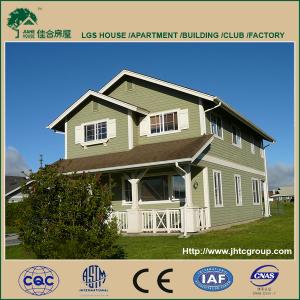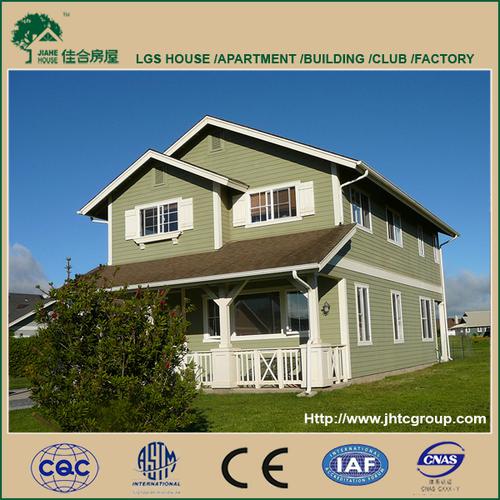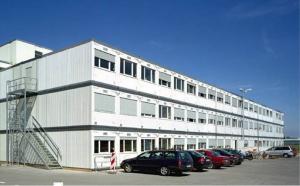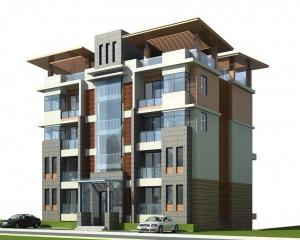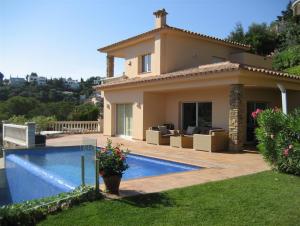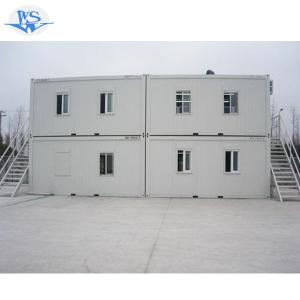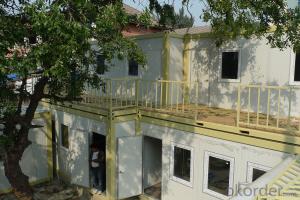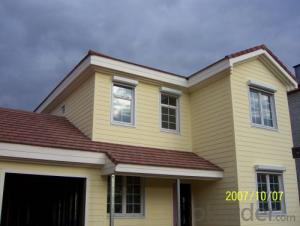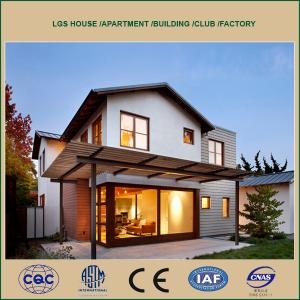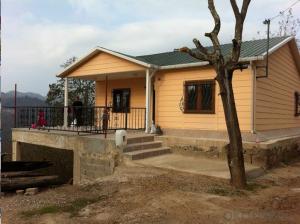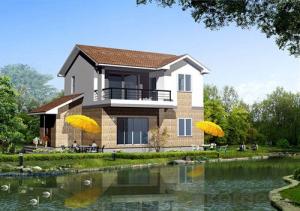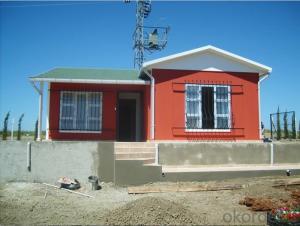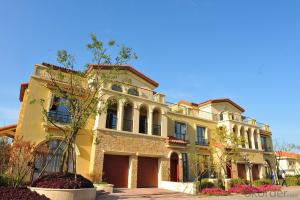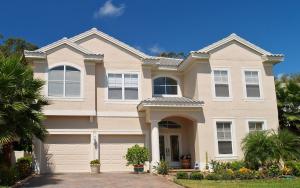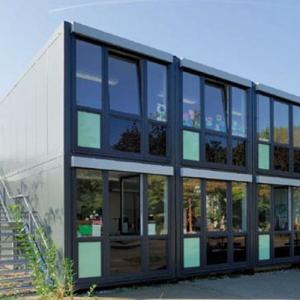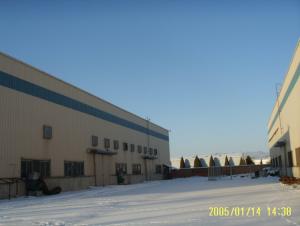Beautiful Prefabricated House for Australia
- Loading Port:
- Tianjin
- Payment Terms:
- TT OR LC
- Min Order Qty:
- 50 m²
- Supply Capability:
- 50000 m²/month
OKorder Service Pledge
OKorder Financial Service
You Might Also Like
Beautiful Prefabricated House for Australia
Heat Preservation
Adopting heat preservation materials likefiber glass wool and composite insulation plates have very good heatpreservation effect.
The heat preservation effect of 15cm composite walls equals to 1mbrick wall.Light steel house consumes only 40% energy of traditional house.
2.Sound Insulation
Light steel house is with wall composed oflight steel stud. heat preservation
materials and gypsum board, floor and roof.Its sound insulation effect can be
as high as 60 decibel.
3.Anti-seismic
Light steel framework and internalmaintenance materials are connected with galvanized self-tap bolts tightly.Thusfirm board rib structure is formed.This system has high ability of earthquakeresistance and horizontal load resistance.It can be used in district with anearthquake normally 9 degrees.
4.Anti-wind and snow
Light steel structure house has goodperformance of integrity and high component intensity which can endure basicsnow load of 1.55KN/㎡,hurricane of 70 meters per second.That can give the wholeconstruction systems a more effective safety guarantee.
5.Architectural style
Professional architectural design andexcellent materials provide for
various architecture house.
6.Green,energy-saving,environment
The materials of light steel structure canby recycled 100%,and others
materials can be recycled 80%.It meetsdemand of modern environment
house concept.
FAQ:
1.How about the installation? For example, the time and cost?
To install 200sqm house needs only 45 days by 6 professional workers. The salary of enginner is USD150/day, and for workers, it's 100/day.
2.How long is the life span of the house?
Around 50 years
3. And what about the loading quantity?
One 40'container can load 140sqm of house.
Images:
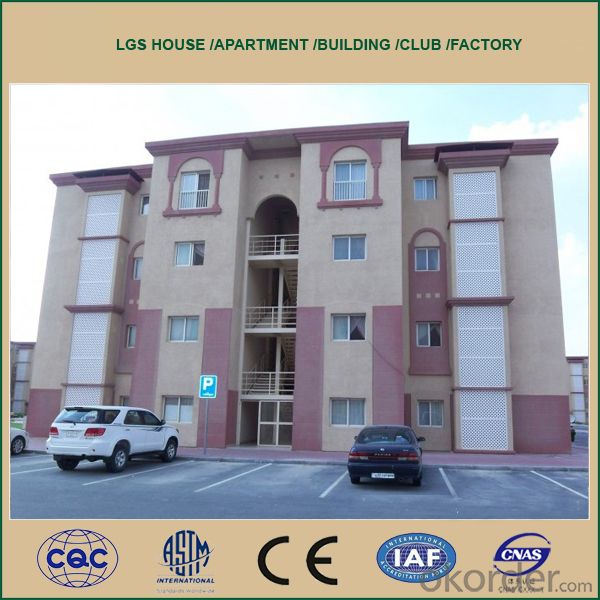
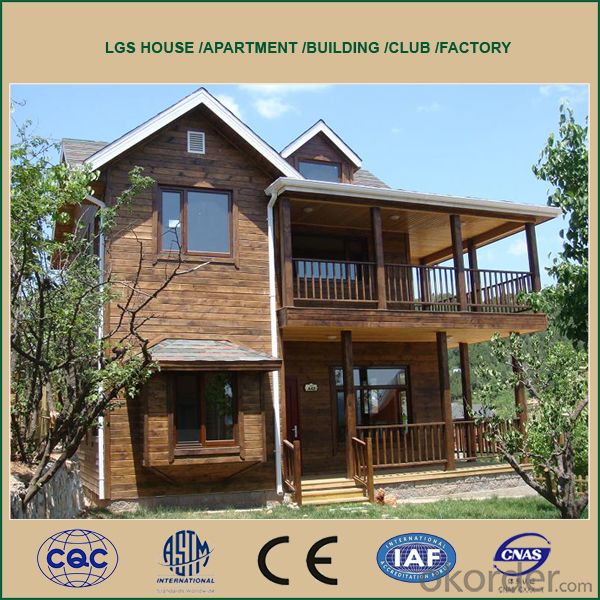
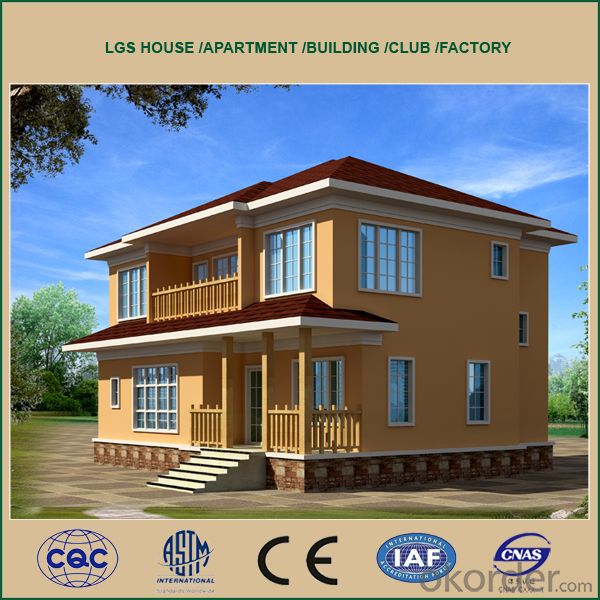
- Q: Are container houses suitable for retail or pop-up shops?
- Yes, container houses can be suitable for retail or pop-up shops. They offer portability, cost-effectiveness, and unique aesthetics, making them an attractive option for businesses looking for temporary or mobile retail spaces. Additionally, container houses can be easily customized and modified to meet specific retail needs, making them versatile and adaptable for various types of businesses.
- Q: Can container houses withstand natural disasters?
- Container houses have demonstrated a certain level of resilience against natural disasters. The robust and long-lasting nature of the shipping containers used in their construction inherently grants them resistance against specific calamities like earthquakes and powerful winds. The containers' structural integrity enables them to endure the forces exerted during such occurrences. Furthermore, container houses can serve as secure and protected shelters amidst hurricanes and tornadoes. Nevertheless, it is crucial to acknowledge that the extent of their resilience may fluctuate based on the container house's design, construction, and location. Implementing appropriate reinforcement and engineering methods can additionally bolster their capacity to withstand natural disasters.
- Q: Are container houses suitable for permanent or temporary living?
- Container houses can be suitable for both permanent and temporary living, depending on individual needs and preferences. For temporary living, container houses offer a cost-effective and flexible solution. They can be easily transported and set up in different locations, making them ideal for people who frequently move or need temporary accommodations, such as construction sites or disaster relief efforts. On the other hand, container houses can also be suitable for permanent living. With proper insulation, plumbing, and electricity installations, container houses can provide all the necessary amenities for a comfortable and functional home. They can be customized to meet the specific requirements and aesthetic preferences of individuals or families, offering a unique living space. Container houses also have several advantages for permanent living. They are eco-friendly as they repurpose used shipping containers, which reduces environmental impact. Additionally, container houses are often more affordable than traditional houses, making homeownership more accessible to a wider range of people. However, it is important to consider some potential limitations of container houses for permanent living. The limited size of shipping containers may pose challenges for larger families or individuals who require more space. Modifying containers to meet building codes and regulations may also involve additional costs and time. Furthermore, the industrial look of container houses may not appeal to everyone's aesthetic preferences. In conclusion, container houses can be suitable for both permanent and temporary living, depending on individual needs and preferences. They offer cost-effectiveness, flexibility, and eco-friendliness, making them a viable option for various living situations. However, it is crucial to carefully consider the specific requirements and limitations of container houses before deciding on their suitability for a particular living arrangement.
- Q: Are container houses resistant to noise pollution or traffic noise?
- Container houses can provide some level of resistance to noise pollution or traffic noise, but it ultimately depends on the materials and construction methods used. The thick steel walls of shipping containers can help to block out some external noise, making them more resistant to noise pollution compared to traditional houses made of lighter materials. However, it is important to note that container houses can still be susceptible to noise penetration through gaps and openings in the structure, such as windows, doors, or ventilation systems. Therefore, proper insulation and soundproofing measures should be taken during the construction process to enhance their noise resistance capabilities. Installing double-glazed windows, using acoustic insulation materials, and sealing any gaps can significantly reduce the impact of traffic noise or other external sounds. Additionally, the location of the container house also plays a crucial role in determining its resistance to noise pollution. Placing the house away from busy roads or other noisy environments can further minimize the impact of traffic noise.
- Q: What are the ancillary facilities in the office?
- bank (2-3) or bank self-service outlets, internal staff Dining area, business center and so on.
- Q: How are container houses different from traditional houses?
- Container houses, otherwise known as shipping container homes, possess several distinctive qualities that set them apart from conventional houses. Firstly, the construction process varies significantly. Unlike traditional houses, which are crafted using materials such as bricks, wood, and concrete, container houses are built using repurposed shipping containers composed of durable steel. Secondly, container houses offer greater cost efficiency in comparison to traditional houses. The utilization of shipping containers significantly reduces construction expenses, as these containers are readily available and relatively inexpensive. Moreover, the construction time is decreased since container houses can be prefabricated and assembled on-site, resulting in reduced labor costs. Another notable distinction lies in the flexibility and versatility of container houses. Traditional houses are typically fixed structures, whereas container houses can be easily modified, expanded, or relocated. The modular design of shipping containers allows for increased adaptability in terms of the layout and design of the living space. This adaptability makes container houses a popular choice for individuals seeking a more personalized and distinctive living environment. Additionally, container houses are regarded as more environmentally friendly compared to traditional houses. By repurposing shipping containers, these homes contribute to recycling efforts and waste reduction. Furthermore, container houses often incorporate sustainable features such as solar panels, rainwater harvesting systems, and energy-efficient insulation, making them more ecologically friendly and energy-efficient. In terms of aesthetics, container houses can possess a modern and industrial appearance due to their steel structure. However, with imaginative designs and exterior finishes, they can also resemble traditional homes. This versatility in appearance allows homeowners to select a style that aligns with their preferences. In summary, container houses differ from traditional houses in terms of construction materials, cost-effectiveness, flexibility, environmental impact, and aesthetic options. These unique characteristics make container houses an appealing and innovative alternative for individuals seeking a more affordable, sustainable, and customizable housing solution.
- Q: Can container houses be designed with water-saving fixtures?
- Yes, container houses can definitely be designed with water-saving fixtures. These fixtures, including low-flow toilets, faucets, and showers, can be installed in container homes to reduce water consumption and promote sustainability. Additionally, rainwater collection systems can be incorporated into the design to further conserve water resources.
- Q: Can container houses be connected to municipal utilities?
- Yes, container houses can be connected to municipal utilities. While container houses are typically built from repurposed shipping containers, they can still be equipped with the necessary infrastructure to connect to municipal utilities such as water, electricity, and sewer systems. The process of connecting a container house to these utilities may require some additional planning and modifications, but it is definitely possible. Many container house designs incorporate plumbing and electrical systems that can be connected to the local water and power grids. Additionally, container houses can be equipped with septic tanks or connected to the municipal sewer lines for waste disposal. It is important to consult with local authorities and utility providers to ensure that all necessary permits and regulations are met when connecting a container house to municipal utilities.
- Q: Can container houses be soundproofed for privacy?
- Yes, container houses can be soundproofed for privacy. While containers are made of strong and durable materials, they may not inherently provide the best sound insulation. However, there are various methods that can be employed to achieve soundproofing in container houses. Firstly, adding insulation materials to the walls, floors, and ceilings can significantly reduce sound transmission. There are several types of insulation available, such as fiberglass, foam boards, or rock wool, which can be installed within the walls to absorb and dampen sound waves. Additionally, sealing any gaps or cracks in the container walls will help prevent sound leakage. This can be done using acoustic sealants or weatherstripping materials to ensure a tight seal around windows, doors, and any other openings. Another effective method is to install acoustic panels or soundproof curtains on the walls. These panels are designed to absorb sound and minimize its reflection, thus reducing noise transfer between rooms or from the outside environment. Furthermore, using double-glazed or laminated glass windows can significantly improve sound insulation. These windows consist of two or more layers of glass with an air or gas-filled space in between, which acts as a barrier against noise transmission. Finally, considering the layout and design of the container house can also help enhance soundproofing. For example, placing rooms with higher noise levels, such as living areas, away from bedrooms or quiet spaces can minimize disturbance. In conclusion, while container houses may not naturally provide excellent sound insulation, they can be soundproofed for privacy. By incorporating insulation materials, sealing gaps, using acoustic panels or curtains, installing double-glazed windows, and considering the overall layout, container houses can be transformed into private and serene living spaces.
- Q: Are container houses suitable for retirement living?
- Depending on one's preferences and needs, container houses can be a viable choice for retirement living. One major advantage of container houses is their affordability in comparison to traditional housing options. This is especially beneficial for retirees who have limited financial resources or are seeking to downsize and reduce expenses. Furthermore, container houses offer a high level of customization, allowing retirees to design a living space that caters to their specific requirements. They can be modified to include features such as easy accessibility ramps, wider doorways for mobility aids, and open floor plans to minimize excessive movement within the house. In addition, container houses are generally low-maintenance and energy-efficient. They are constructed using durable materials that require minimal upkeep, lessening the maintenance burden for retirees. Moreover, container houses can be equipped with eco-friendly features like solar panels and rainwater harvesting systems, which contribute to lower utility costs and reduced environmental impact. However, it's important to consider potential drawbacks of container houses for retirement living. Limited space might not be suitable for retirees who require more storage or dedicated areas for specific hobbies or interests. Additionally, container houses may not be situated in traditional retirement communities or neighborhoods, affecting the social aspect of retirement living for those who value community engagement and interaction. Ultimately, the suitability of container houses for retirement living hinges on the individual's preferences, financial situation, and specific needs. Retirees should thoroughly evaluate their requirements and explore all available options before making a decision. Seeking guidance from professionals in the field, such as architects or retirement living experts, can also provide valuable insights in determining the optimal housing solution for retirement.
Send your message to us
Beautiful Prefabricated House for Australia
- Loading Port:
- Tianjin
- Payment Terms:
- TT OR LC
- Min Order Qty:
- 50 m²
- Supply Capability:
- 50000 m²/month
OKorder Service Pledge
OKorder Financial Service
Similar products
Hot products
Hot Searches
Related keywords
